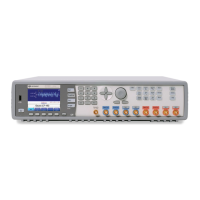Appendix
634
7.10 Attributes of AC Signals
The most common ac signal is a sine wave. In fact, any periodic signal can
be represented as the sum of different sine waves. The magnitude of a sine
wave is usually specified by its peak, peak-to-peak, or root-mean square
(RMS) value. All of these measures assume that the waveform has zero
offset voltage.
Attributes of AC Signals
The peak voltage of a waveform is the maximum absolute value of all points
in the waveform. The peak-to-peak voltage is the difference between the
maximum and minimum. The RMS voltage is found by summing the squares
of the voltages of every point in the waveform, dividing the sum by the
number of points, and then taking the square root of that quotient. The RMS
value of a waveform also represents the one-cycle average power in the
signal:
Crest factor is the ratio of a signal’s peak value to its RMS value and will
differ according to waveshape. The table below shows several common
waveforms with their respective crest factors and RMS values.

